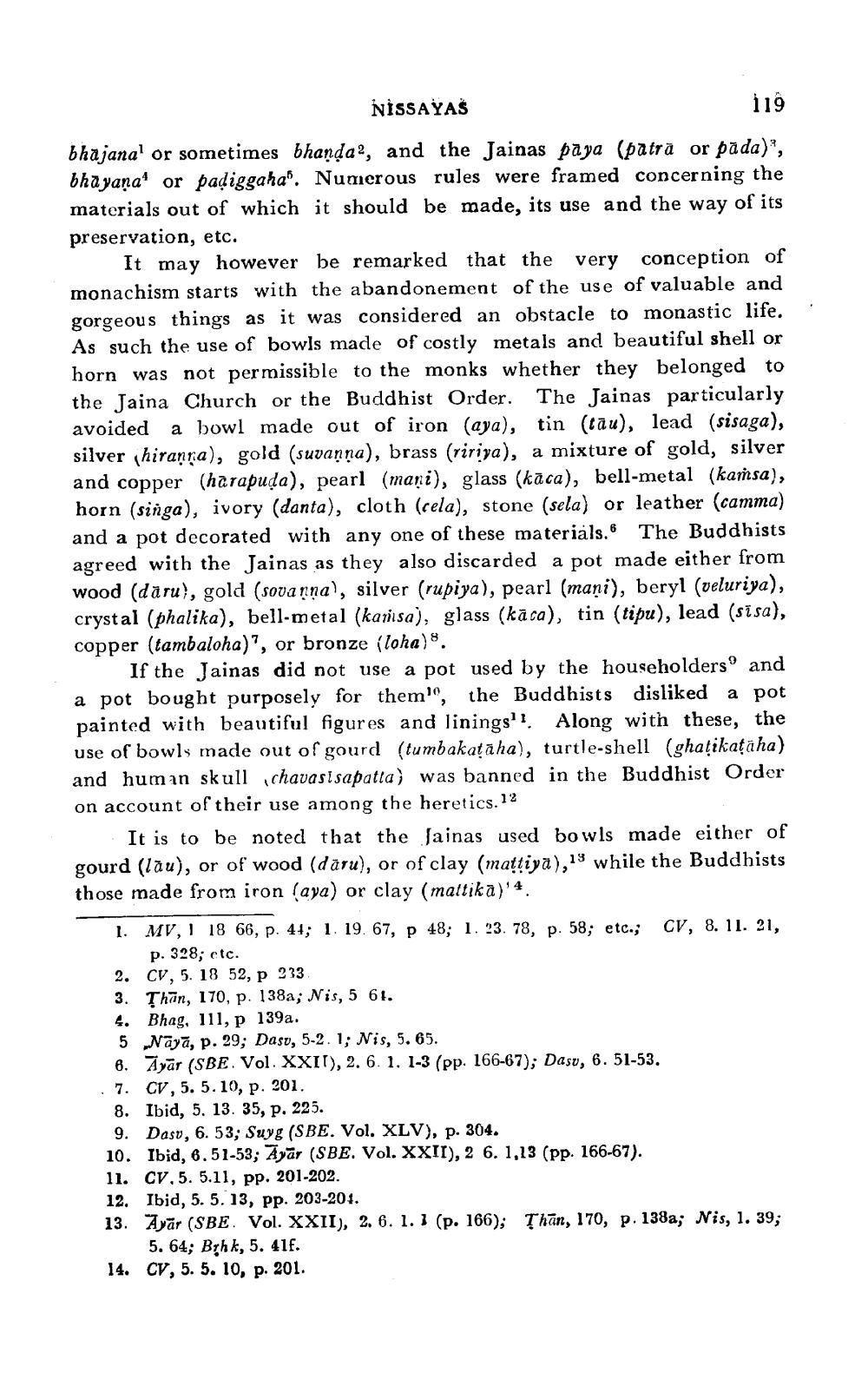________________
NISSAYAS
119
bhajana' or sometimes bhanda2, and the Jainas paya (patra or pada), bha yana' or padiggaha'. Numerous rules were framed concerning the materials out of which it should be made, its use and the way of its preservation, etc.
It may however be remarked that the very conception of monachism starts with the abandonement of the use of valuable and gorgeous things as it was considered an obstacle to monastic life. As such the use of bowls made of costly metals and beautiful shell or horn was not permissible to the monks whether they belonged to the Jaina Church or the Buddhist Order. The Jainas particularly avoided a bowl made out of iron (aya), tin (tāu), lead (sisaga), silver (hiranna), gold (suvanna), brass (ririya), a mixture of gold, silver and copper (harapuļa), pearl (maņi), glass (kāca), bell-metal (kaṁsa), horn (singa), ivory (danta), cloth (cela), stone (sela) or leather (camma) and a pot decorated with any one of these materials. The Buddhists
with the Jainas as they also discarded a pot made either from wood (daru), gold (sovannal, silver (rupiya), pearl (mani), beryl (veluriya), crystal (phalika), bell-metal (kariisa), glass (kāca), tin (tipu), lead (sisa), copper (tambaloha), or bronze (loha)'.
If the Jainas did not use a pot used by the householders and a pot bought purposely for them", the Buddhists disliked a pot painted with beautiful figures and linings!!. Along with these, the use of bowls made out of gourd (tumbakat āha), turtle-shell (ghatikațaha) and human skull chavasisapatta) was banned in the Buddhist Order on account of their use among the heretics. 12
It is to be noted that the sainas used bowls made either of gourd (lau), or of wood (daru), or of clay (mattiya),19 while the Buddhists those made from iron (aya) or clay (mattika)'4.
1. MV, 1 18 66, p. 41; 1. 19. 67, p 48; 1. 23. 78, p. 58; etc.; CV, 8. 11. 21,
p. 328; etc. 2. CV, 5.18 52, p 233 3. Thân, 170, p. 138a; Nis, 5 6. 4. Bhag, 111, p 139a. 5 „Nāyā, p. 29; Dasv, 5-2.1; Nis, 5.65. 6. Ayar (SBE. Vol. XXII), 2. 6. 1. 1-3 (pp. 166-67); Dasv, 6. 51-53. . 7. CV, 5. 5.10, p. 201.
8. Ibid, 5. 13. 35, p. 225. 9. Dasv, 6.53; Suyg (SBE. Vol. XLV), p. 304. 10. Ibid, 6.51-53; Ayar (SBE. Vol. XXII), 2 6. 1,13 (pp. 166-67). 11. CV,5. 5.11, pp. 201-202. 12. Ibid, 5. 5. 13, pp. 203-201. 13. Ayar (SBE. Vol. XXII), 2. 6. 1. 1 (p. 166); Thān, 170, p. 138a; Nis, 1. 39;
5. 64; Bihk, 5. 41f. 14. CV, 5. 5. 10, p. 201.




